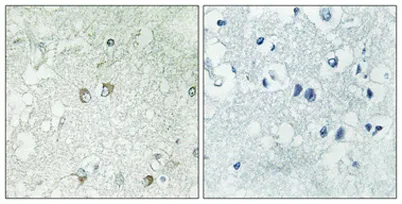Golgin 45 rabbit pAb
CAT:
855-ES7816-02
Size:
100 μL
Price:
Ask
- Availability: 24/48H Stock Items & 2 to 6 Weeks non Stock Items.
- Dry Ice Shipment: No




Golgin 45 rabbit pAb
- Description: Caution: Because of the presence of a potential basic motif and leucine-zipper domain, PubMed: 9129147 and PubMed: 11056056 have thought that BLZF1 is a potential transcription factor. They found it localized in the nucleus, except isoform 2, which was cytoplasmic. However, homology at several typical position for basic or hydrophobic residues is missing. function: Required for normal Golgi structure and for protein transport from the endoplasmic reticulum (ER) through the Golgi apparatus to the cell surface. induction: Up-regulated by retinoids. subunit: Interacts with GORASP2 and with the GTP-bound form of RAB2, but not with other Golgi Rab proteins. GORASP2 and BLZF1 form a RAB2 effector complex on medial Golgi. tissue specificity: Ubiquitous. Also found in cell lines derived from several hematopoietic pathologies, such as T-cell leukemia, pro-B, pre-B, myeloma, and plasmacytoma cell lines, but not in Burkitt lymphoma cells.
- Synonyms: BLZF1; JEM1; Golgin-45; Basic leucine zipper nuclear factor 1; JEM-1; p45 basic leucine-zipper nuclear factor
- Gene ID: 8548
- UniProt: Q9H2G9
- Cellular Locus: Golgi apparatus membrane.; [Isoform 1]: Nucleus. Detected in the nucleus upon heterologous expression. Not detected in the cytoplasm..; [Isoform 2]: Cytoplasm. Not detected in the nucleus..
- Host: Rabbit
- Species Reactivity: Human, Mouse
- Immunogen: The antiserum was produced against synthesized peptide derived from human BLZF1. AA range:10-59
- Clonality: Polyclonal
- Validated Applications: WB, IHC, IF, ELISA
- Stability: 1 year
- Concentration: 1 mg/mL
- Dilution: Western Blot: 1/500 - 1/2000. Immunohistochemistry: 1/100 - 1/300. Immunofluorescence: 1/200 - 1/1000. ELISA: 1/20000. Not yet tested in other applications.
- Molecular Weight: 47kD
- Storage Conditions: PBS with 0.02% sodium azide and 50% glycerol pH 7.4. Store at -20°C. Avoid repeated freeze-thaw cycles.
